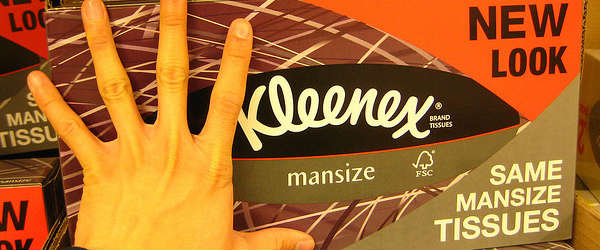Effective laboratory sterilization methods are essential for working with isolated cell lines.
For obvious reasons, you don’t want bugs from the environment growing in your nice culture medium, and, equally, cultures must be sterilized before disposal.
Unless you are using microbiology microscopes to view your cultures, you might not be aware of any unwanted microbe guests.
It’s time to brush up on the various laboratory sterilization methods and how they work to keep your cells healthy, happy, and bug-free.
6 Common Laboratory Sterilization Methods
1. Wet Heat (Autoclaving)
Most labs use autoclaving as their laboratory sterilization method of choice, using pressurized steam to heat the material to be sterilized. This is a very effective method that kills all microbes, spores, and viruses, although for some specific bugs, especially high temperatures or incubation times are required.
Autoclaving kills microbes by hydrolysis and coagulation of cellular proteins, which is efficiently achieved by intense heat in the presence of water.
The intense heat comes from the steam. Pressurized steam has a high latent heat; at 100°C it holds 7 times more heat than water at the same temperature. This heat is liberated on contact with the cooler surface of the material to be sterilized, allowing rapid delivery of heat and good penetration of dense materials.
At these temperatures, water does a great job of hydrolyzing proteins—so those bugs don’t stand a chance.
2. Dry Heat (Flaming, Baking)
Dry heating has one crucial difference from autoclaving. You’ve guessed it—there’s no water, so protein hydrolysis can’t take place.
Instead, dry heat tends to kill microbes by oxidation of cellular components. This requires more energy than protein hydrolysis, so higher temperatures are required for efficient sterilization using dry heat.
For example, sterilization can normally be achieved in 15 minutes by autoclaving at 121°C, whereas dry heating would generally need a temperature of 160°C to sterilize in a similar amount of time.
3. Filtration
Filtration is a great way to quickly sterilize solutions without heating. Filters work by passing the solution through a filter with a pore diameter too small for microbes to pass through.
Filters can be sintered glass funnels made from heat-fused glass particles or, more commonly these days, membrane filters made from cellulose esters. For the removal of bacteria, filters with an average pore diameter of 0.2µm are normally used.
But remember, viruses and phages can pass through these filters, so filtration isn’t a good laboratory sterilization method if these are a concern.
4. Solvents
Ethanol is commonly used as a disinfectant, but isopropanol is better at dissolving lipids and is probably a better option.
Both solvents work by denaturing proteins, though the process requires water. So, to be effective, they must be diluted a little bit, from 100% to 60–90%, with water taking up the remaining percent.
Again, it’s important to remember that although ethanol and isopropanol are good at killing microbial cells, they have no effect on spores.
5. Radiation
UV, X-rays, and gamma rays are all types of electromagnetic radiation that have profoundly damaging effects on DNA, so they make excellent sterilization tools.
The main difference between them, in terms of their effectiveness, is their penetration.
UV has limited penetration in air, so sterilization occurs in only a fairly small area around the lamp. However, it is relatively safe and quite useful for sterilizing small areas, like laminar flow hoods. (It’s really important to remember to sterilize your equipment, too.)
X-rays and gamma rays are far more penetrating, which makes them more dangerous, but they are very effective for large-scale cold sterilization of plastic items (e.g., syringes) during manufacturing.
6. Gas Sterilization
Ethylene oxide can be used to sterilize equipment that is sensitive to heat or moisture and is often used to sterilize medical equipment such as catheters and stents.
Ethylene oxide essentially prevents cell metabolism and replication by alkylation. Because ethylene oxide is easily absorbed, equipment must be aerated after sterilization to remove any residue.
Ethylene oxide is also highly toxic and can present a number of health risks. As it’s generally used for healthcare products, you’re not very likely to be using it in the lab.
Science is dangerous. So, while you’re here, why not download our attractive and free lab safety poster that explains all the common hazard symbols and the precautions against them?
Laboratory Sterilization Methods Summarized
So, those are some of the common laboratory sterilization methods. These include using wet heat (autoclaving) for comprehensive microbial elimination, applying dry heat for waterless oxidation of microbes, and employing filtration for rapid, non-thermal sterilization.
Additionally, solvents like ethanol and isopropanol are effective in protein denaturation, while various forms of radiation provide targeted DNA damage for sterilization. For heat-sensitive items, gas sterilization with ethylene oxide offers a viable solution, though it requires careful post-sterilization aeration to mitigate toxicity. Each method plays a vital role in ensuring laboratory safety and preventing the unintended spread of microorganisms.
If we’ve missed any, please feel free to let us know in the comments section below.
FAQs
Q: How do the costs of these sterilization methods compare? For example, is autoclaving more cost-effective than gas sterilization with ethylene oxide?
A: Autoclaving is generally considered more cost-effective for routine laboratory use, especially because it uses water and electricity, which are relatively inexpensive resources.
On the other hand, gas sterilization with ethylene oxide is typically more costly due to the need for specialized equipment, the gas itself, and the necessity for aeration post-sterilization.
This method is usually reserved for heat or moisture-sensitive items that cannot be sterilized using more standard, less expensive methods.
Q: What are the specific safety precautions needed when using each of these sterilization methods, especially with potentially hazardous methods like ethylene oxide gas sterilization and radiation?
A: Each sterilization method requires specific measures. For instance, autoclaving involves high pressure and temperatures, so users must be trained to avoid burns or pressure-related accidents.
Ethylene oxide sterilization requires handling a potentially carcinogenic chemical, demanding rigorous safety protocols to prevent inhalation or skin contact.
Radiation sterilization methods necessitate protection against exposure, which can be hazardous to health. Proper shielding, monitoring, and training are crucial to ensure safety.
Q: How do these sterilization methods impact the environment, particularly in terms of waste generation and energy consumption? For instance, is there an environmentally preferred method among these options?
A: Autoclaving is relatively energy-intensive and uses significant amounts of water, but it doesn’t produce harmful emissions.
Chemical methods like using solvents or ethylene oxide can generate hazardous waste, requiring careful disposal to mitigate environmental impact.
Radiation methods do not produce direct waste, but they require energy for operation and have potential safety and environmental concerns if not properly managed.
In terms of environmental friendliness, filtration, and certain low-temperature sterilization methods might be preferred, assuming they meet the necessary sterilization standards for the intended application.
Originally published March 28, 2012. Reviewed and updated February 2021 and April 2024.







